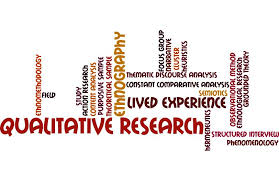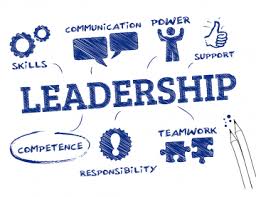
Critical Evaluation of artifacts
Order Instructions:
Part A Assignment NRSG 257
Hello Writer Sir, How are you today.
Thank you so much for helping for this assignment.
I like you to use scenario given below because you can find more resources for Asthma.
Topic: Critical Evaluation of artefacts the following essay topics;
Scenario
Evaluate the psychosocial effects of living with asthma in relation to nursing care of the primary school aged child. Discuss how this information will guide evidence based Australian nursing practice.
A portfolio of 8 artefacts related to the chosen topic.
When undertaking weekly Inquiry Based Learning activities throughout the semester, students will be collecting artefacts related to each scenario learning issue. Artefacts are items that are researched and contribute to learning about the scenario issues and may include images, diagrams, articles, web-links, charts, forms, test results, policies, procedures, skills activities / competencies, that relate directly to nursing care for a child/adolescent/family guided by the learning issues presented in each scenario.
Writer sir, I like you to use General articles or Web link to collect artifacts of above given scenario. Artefacts must be Australian or New Zealand study based.
I need artifacts and there link so I can paste in to my electronic portfolio because teacher has to look those artifacts, they are relevant to given scenario. So please give me the paper in given order
• Artifacts (Must be Australian or New Zealand study based, Must be 8 artifacts only year 2009 to 2015 study based )
• Artifacts link, Which will be working
• Why you think this artifacts is useful for your research. Only 2 or 3 sentence for each artifacts please.
• 10 references not older then 2009 (2009 to 2015)
• Part A – up to 300 words in descriptive annotations (Student will be required to present and annotate the content of the collected artefacts in no more than 300 words in Mahara e-portfolio format. Links should be used so the audience can access the artefact from its source and the annotations should demonstrate your understanding of the artefact content or message)
SAMPLE ANSWER
Critical Evaluation of artifacts
Annotated Bibliography
Australia Government. (2012). Asthma. Retrieved from:
URL:
http://aihw.gov.au/WorkArea/DownloadAsset.aspx?id=10737421255
The artifact provides a summary of Asthma. It also deliberates on the burden of the disease, its effects including psychological effects, and strategies to handle the same. The information contained herein is essential for nurse practitioners in Australia.
Blanchard, M., Morris, J., Birrell, E., Justine, S. (2014). National Young people and Asthma Survey
URL:
The artifact provides a report on a survey on young people that suffer from asthma. Young and Well CRC did the survey, together with state and territory Asthma Foundations and Asthma Australia.
Clarke, S., & Calam, R. (2012). The effectiveness of psychosocial interventions designed to improve health-related quality of life (HRQOL) amongst asthmatic children and their families: a systematic review. Quality Of Life Research, 21(5), 747-764. doi:10.1007/s11136-011-9996-2
URL:
This article as well provides insights on the topic of study. The study argues that children with asthma are at higher risk of experiencing compromised health related quality of life as compared to other peers. It therefore, discusses the benefits of various psychological interventions. The article is also evidenced based research, hence applicable in the Australia nurse practice.
Collins, J. E., Gill, T. K., Chittleborough, C. R., Martin, A. J., Taylor, A. W., & Winefield, H. (2008). Mental, Emotional, and Social Problems Among School Children with Asthma. Journal Of Asthma, 45(6), 489-493. doi:10.1080/02770900802074802
URL:
The article provides elaborate information concerning the emotional, mental, and social challenges encountered by the school-children suffering from Asthma. It is an evidenced based research article, hence credible and applicable to Australia nursing practice.
Gang, W., Ting, Z., Lan, W., Lei, W., Juan-Juan, F., Hong-ping, Z., & Yu-lin, J. (2011). Relationship between Current Psychological Symptoms and Future Risk of Asthma Outcomes: A 12-Month Prospective Cohort Study. Journal Of Asthma, 48(10), 1041-1050. doi:10.3109/02770903.2011.631238
URL:
The article provides insights on the relationship that exists between current and future risk of asthma outcomes. Psychological symptoms such as anxiety and depression are a prediction of future risk outcome. Therefore, it is important that parents understand such symptoms in their children to provide early interventions.
Giallo, R., Bahreinian, S., Brown, S., Cooklin, A., Kingston, D., & Kozyrskyj, A. (2015). Maternal Depressive Symptoms across Early Childhood and Asthma in School Children: Findings from a Longitudinal Australian Population Based Study. Plos ONE, 10(3), 1-12. doi:10.1371/journal.pone.0121459
URL:
The articles focuses on the maternal depression associated with having children with asthma. The article recommends interventions to help promote maternal mental health when providing care to children. The article is evidence based and appropriate for nurses in Australia.
National Asthma Council Australia. (2015). Australian Asthma Handbook; Quick reference guide.
URL:
http://www.asthmahandbook.org.au/uploads/555143d72c3e3.pdf
The artifact is credible was created by National Asthma Council Australia and can be used by nurses, pharmacists, asthma educators, and health practitioners. This artifact as well provides information on providing care for children suffering from asthma.
Pak, L., & Allen, P. J. (2012). The Impact of Maternal Depression On Children with Asthma. Pediatric Nursing, 38(1), 11-30.
URL:
The article covers on the psychological impacts such as depression among mothers that care for children suffering from asthma. This maternal depression as well affects the child behavior, growth, development, and mental health. The article therefore, is credible and contributes to evidence based Australia nursing practice.
Toole, K. (2013). Help in children gain asthma control: Bundled school-based interventions. Pediatric Nursing, 39(3): 115-125.
URL: https://www.pediatricnursing.net/ce/2015/article3903115125.pdf
This evidenced based article deliberates on ways to help children gain asthma control. The article focuses on school based interventions that as well can help to manage this disease.
Yorke, J., Fleming, S.L., & Shuldham, C. (2009). Psychological interventions for children with asthma. Cochrane Database of Systematic Reviews, Issue 4. Art. No.: CD003272. DOI: 10.1002/14651858.CD003272.pub2.
URL: http://www.researchgate.net/publication/7531759_Psychological_interventions_for_children_with_asthma
This article is useful for this research as it provides various psychological interventions to help children that suffer from Asthma. The article is credible having written by health professionals.
Reference list
Australia Government. (2012). Asthma. Retrieved from:
http://aihw.gov.au/WorkArea/DownloadAsset.aspx?id=10737421255
Blanchard, M., Morris, J., Birrell, E., Justine, S. (2014). National Young people and Asthma Survey. Retrieved from: http://www.asthmaaustralia.org.au/uploadedFiles/Content/State_Content/National/Media_rele ases/2015_Media_releases/YW-Asthma-Survey.pdf
Clarke, S., & Calam, R. (2012). The effectiveness of psychosocial interventions designed to improve health-related quality of life (HRQOL) amongst asthmatic children and their families: a systematic review. Quality Of Life Research, 21(5), 747-764. doi:10.1007/s11136-011-9996-2
Retrieved from: http://eds.a.ebscohost.com/eds/pdfviewer/pdfviewer?sid=439eeb52-f5c3-428d-9389-7cb0d14e5fb3%40sessionmgr4003&vid=0&hid=4213
Collins, J. E., Gill, T. K., Chittleborough, C. R., Martin, A. J., Taylor, A. W., & Winefield, H. (2008). Mental, Emotional, and Social Problems Among School Children with Asthma. Journal Of Asthma, 45(6), 489-493. doi:10.1080/02770900802074802
Retrieved from: http://eds.a.ebscohost.com/eds/pdfviewer/pdfviewer?sid=7a73676a- f889-4efa-b972-bdc2511ed57a%40sessionmgr4004&vid=0&hid=4213
Gang, W., Ting, Z., Lan, W., Lei, W., Juan-Juan, F., Hong-ping, Z., & Yu-lin, J. (2011). Relationship between Current Psychological Symptoms and Future Risk of Asthma Outcomes: A 12-Month Prospective Cohort Study. Journal Of Asthma, 48(10), 1041- 1050. doi:10.3109/02770903.2011.631238
Retrieved from: http://eds.a.ebscohost.com/eds/pdfviewer/pdfviewer?sid=60c05363-24b7-48c6-8973-8fcc46e0de56%40sessionmgr4001&vid=0&hid=4213
Giallo, R., Bahreinian, S., Brown, S., Cooklin, A., Kingston, D., & Kozyrskyj, A. (2015). Maternal Depressive Symptoms across Early Childhood and Asthma in School Children:Findings from a Longitudinal Australian Population Based Study. Plos ONE, 10(3), 1-12. doi:10.1371/journal.pone.0121459
Retrieved from: http://eds.a.ebscohost.com/eds/pdfviewer/pdfviewer?sid=46f37f36-13f5- 4d13-a355-a724e2f08e33%40sessionmgr4001&vid=0&hid=4213
National Asthma Council Australia. (2015). Australian Asthma Handbook; Quick reference guide. Retrieved from: http://www.asthmahandbook.org.au/uploads/555143d72c3e3.pdf
Pak, L., & Allen, P. J. (2012). The Impact of Maternal Depression On Children with Asthma. Pediatric Nursing, 38(1), 11-30. Retrieved from: http://eds.a.ebscohost.com/eds/pdfviewer/pdfviewer?sid=fc15ad42-8afb-422d-826b- 5c501da1168c%40sessionmgr4005&vid=0&hid=4213
Toole, K. (2013). Help in children gain asthma control: Bundled school-based interventions. Pediatric Nursing, 39(3): 115-125. Retrieved from: https://www.pediatricnursing.net/ce/2015/article3903115125.pdf
Yorke, J., Fleming, S.L., & Shuldham, C. (2009). Psychological interventions for children with asthma. Cochrane Database of Systematic Reviews, Issue 4. Art. No.: CD003272. DOI: 10.1002/14651858.CD003272.pub2. Retrieved from: http://www.researchgate.net/publication/7531759_Psychological_interventions_for_child ren_with_asthma
We can write this or a similar paper for you! Simply fill the order form!












